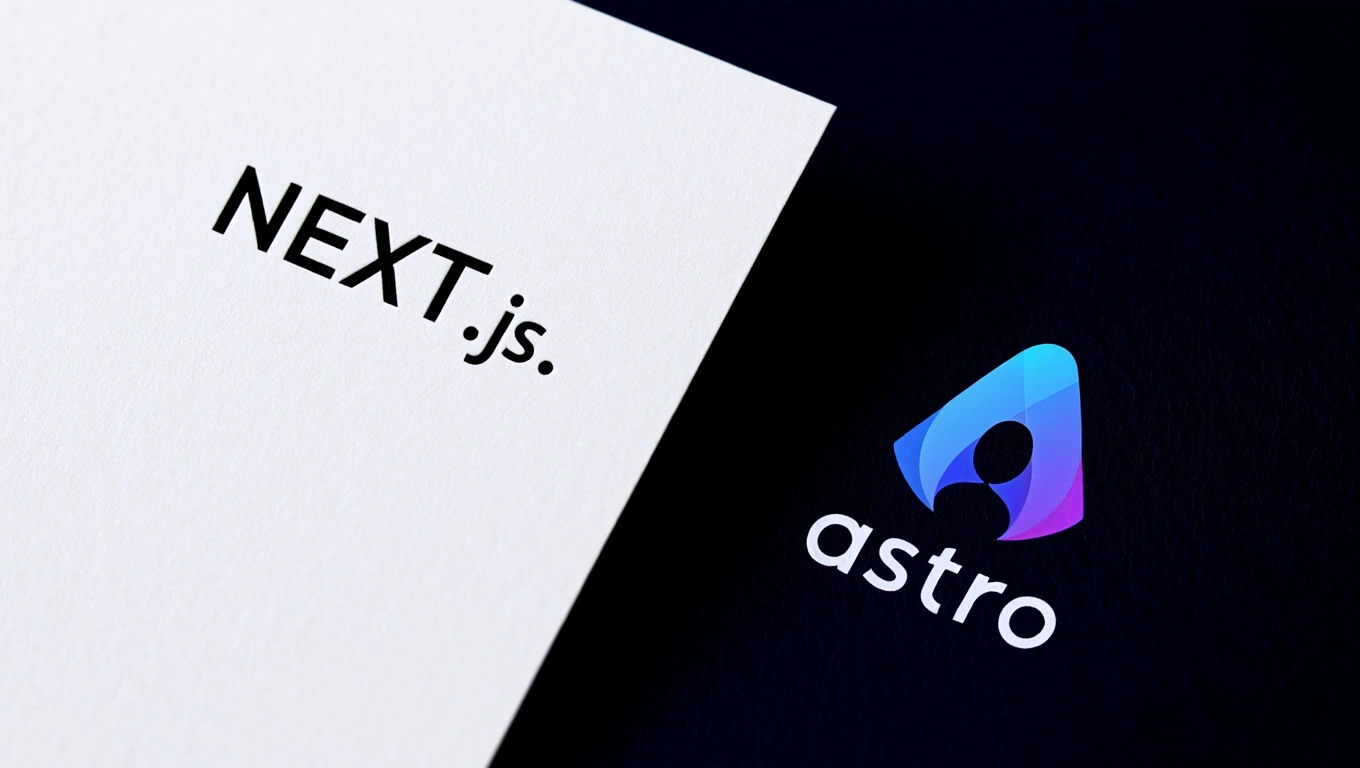🚀 Why Your Website Will Be Left Behind in 2025 (Unless You Do THIS)
Let’s cut through the noise.
If your website isn’t fast, fluid, and frictionless in 2025, it doesn’t matter how beautiful your design is. It doesn’t matter how clever your copy is. It doesn’t even matter how much you spent on ads last quarter.
You’re losing customers. Period.
This isn’t just about speed anymore. It’s about perceived quality, brand authority, and the psychology of trust in a post-AI, hyper-competitive digital world.
Welcome to the brutal truth of the web in 2025.
💡 The Web Has Changed. Your Website Probably Hasn’t.
Here’s what most company websites still look like today:
- 12MB homepage
- Third-party scripts piled on like toppings at a frozen yogurt bar
- Shimmering animations that choke mid-scroll
- Fonts loading three seconds after the first paint
- A cookie banner, a chatbot, and a video autoplay all fighting for attention
And here’s what users expect now:
- 1.5s or less load time
- No jank. No stutter. No lag. Ever.
- Instant input response
- Page transitions that feel like native apps
- Silent performance. Nothing in the way.
❌ “But it works fine on my laptop…”
Stop.
Your MacBook Pro with 64GB of RAM is not the real world.
Your real users are on budget Android phones, over mobile data, in noisy environments, multitasking across apps.
They’re impatient. They’ll bounce in under 3 seconds if your site chokes.
Worse: They won’t even know why they left. They’ll just feel something was “off.”
And that’s the death of trust in 2025.
⚠️ The Hidden Cost of a Slow Site
You don’t see it in Google Analytics. You don’t see it in your CRM. But it’s there.
Here’s what slow sites do:
- Kill your conversion rate silently
- Bury you in search rankings
- Inflate your paid ad spend (by tanking Quality Score)
- Make your product feel less premium
- Undermine trust with your most valuable audience
The scariest part? It’s not about slow anymore. It’s about feeling slow. Lag. Delay. A single scroll stutter can undo 10 years of brand equity.
🚨 2025 Benchmark: The “Perception Threshold”
In 2025, high-performance websites follow one unspoken law:
Nothing should make the user wait. Ever.
Let’s define the Perception Threshold — the invisible line between fast and frustrating:
| Metric | Passes Threshold | Fails Threshold |
|---|---|---|
| First load time | ≤ 1.5s | > 3s |
| Input latency | < 100ms | > 250ms |
| Animation/jank rate | Zero | Any stutter |
| Interaction to response | Instant | Laggy/unclear |
| CLS (layout shift) | < 0.1 | > 0.25 |
If you’re above the line on any of these — your site feels bad.
And perception is reality now.
🎯 The 5 Web Performance Secrets That Are Skyrocketing Conversions
Let’s get to it. These are the secrets that high-growth teams have quietly adopted in 2024 and that will be mandatory in 2025.
1. Performance is Design Now
Design without performance is theater. Performance is the design.
You don’t “optimize” after launch anymore. You design with performance in mind from the first Figma wireframe.
This means:
- Avoiding unnecessary motion unless it’s buttery smooth
- Choosing typefaces that load instantly
- Designing components that render cleanly above-the-fold
- Prioritizing perceived speed over visual gimmicks
Less is not more. Less is necessary.
2. Speed is the New Conversion Hack
Forget “growth hacks.” Your biggest conversion lever might be this:
Go from 3.2s load time to 1.2s.
That alone can 2x your form submissions. Why?
- Faster sites build momentum. Every click feels intentional.
- Users don’t hesitate. And hesitation kills action.
- Speed creates confidence. You feel more “premium.”
Want to boost ROI without increasing spend? Don’t redesign. Refactor.
3. Core Web Vitals Are Not Optional
Google may not rank based on them alone, but they still define your user experience.
By 2025, most users don’t even know the terms, but they feel the difference between:
- A site that “snaps” and one that “drags”
- A stable interface vs. a jumpy mess
- Responsive click feedback vs. “did that work?”
If you’re ignoring LCP, FID, and CLS, you’re playing blindfolded.
And in 2025, the web is too fast to play blind.
4. Every Millisecond is a Branding Decision
You think your slow-loading site is “still beautiful”? Think again.
Users now equate performance with professionalism.
Slow = Amateur
Fast = Expert
Your $50,000 branding package means nothing if it takes 5 seconds to load.
Every single delay, flicker, or animation glitch is telling your user:
“We didn’t care enough to fix this.”
In 2025, milliseconds are your tone of voice. Treat them like copy.
5. You Need a Performance Budget
Yes, a real budget. Like you do for design, ads, content, or SEO.
A performance budget isn’t just money — it’s a hard limit on how big, slow, or heavy your site is allowed to be.
Smart teams use performance budgets like:
- Max 100KB JavaScript per page
- Images lazy-loaded and WebP only
- No third-party scripts without review
- Less than 1s Time to Interactive on mobile
If it breaks the budget, it doesn’t ship.
No exceptions. No excuses. That’s how you stay ahead.
🧨 The Pain of Not Acting (aka The Wake-Up Call)
Still think this is optional? Let’s play out the scenario.
You run an amazing brand. You’ve got PR buzz, a great product, real traction.
But your site takes 4.6s to load. Animations jank. Buttons hesitate. Mobile performance is miserable.
Here’s what happens:
- Your Google Ads CPC creeps up 20% because your landing page is slow
- Your SEO drops to page 2 because your LCP is out of bounds
- Your user signup rate drops 18% over 6 months
- Your NPS quietly tanks — “I don’t know, it just felt frustrating.”
- You spend $15k on a redesign that doesn’t fix the real problem
Six months later, you’re wondering where the growth went.
🧠 But Here’s the Opportunity
Your competitors are still asleep. They’re still stuffing their pages with unoptimized video, bloated JS frameworks, and useless plugins.
You? You’re about to sprint past them.
Here’s how:
- Audit your current performance (Lighthouse, WebPageTest, etc.)
- Set non-negotiable performance budgets
- Cut the fat. Ruthlessly.
- Prioritize mobile-first, real-device performance
- Make it part of your brand culture
Speed isn’t just technical. It’s strategic.
💬 Real Talk for Founders, CMOs, and Product Leaders
This is not a dev-only concern. This is your P&L.
- Speed affects acquisition
- Speed affects conversion
- Speed affects retention
- Speed affects SEO
- Speed affects your brand feel
Performance is no longer a backend decision. It’s a boardroom one.
If you’re not treating web performance as a core business function in 2025, you’re going to fall behind. Not slowly. Rapidly.
🏁 TL;DR: Do THIS or Get Left Behind
2025 is the year performance becomes table stakes.
Here’s your cheat sheet:
- 🔥 Design with performance from day one
- ⚡ Load under 1.5s or lose 50% of your users
- 📈 Treat every millisecond as a conversion lever
- 🎯 Make Core Web Vitals non-negotiable
- 💸 Budget for performance like you budget for ads
Your users won’t thank you for making your site fast.
But they will punish you if you don’t.
So: Do it now. Before your competitor does.
🛠 Need Help? We’re Your Web Performance Partner
At OpenWork3, we don’t just optimize sites. We engineer high-converting, high-trust experiences that scale across devices, channels, and user expectations.
Whether you’re a founder scaling fast or a marketing team stuck in the redesign loop — we can help.
👉 Book a free audit and let’s make your site unstoppable.


